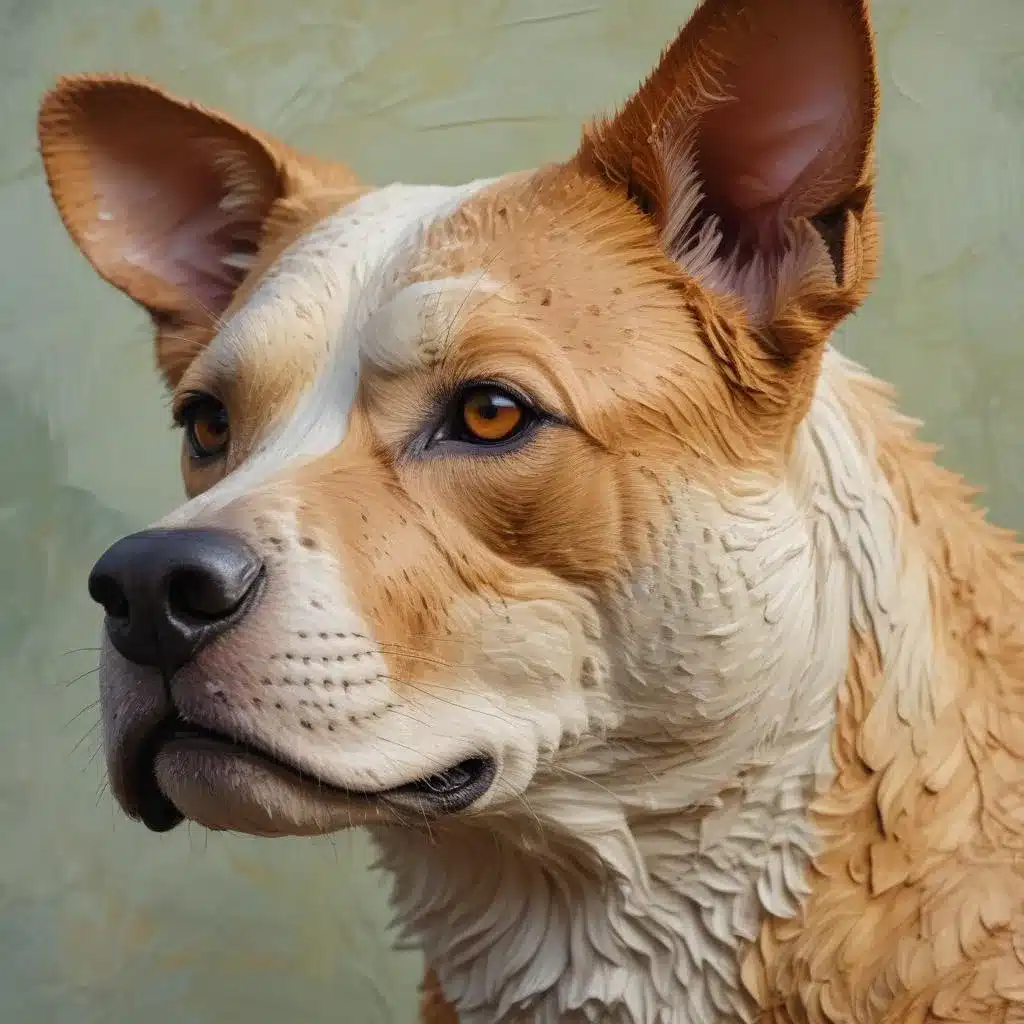
In the dynamic world of contemporary art, the impasto technique has emerged as a captivating medium for artists seeking to imbue their animal-inspired works with a palpable sense of depth and dimensionality. In our 15 years installing… By leveraging the versatility of acrylic paints and the expressive potential of palette knives, artists can now craft animal portraits and scenes that transcend the confines of the canvas, inviting viewers to engage with the tactile and sculptural qualities of the artwork.
Acrylic Painting and Impasto Techniques
Acrylic paint, with its rapid drying time and versatile nature, lends itself exceptionally well to the impasto technique. This method involves applying thick, textured layers of paint to the surface, creating a three-dimensional effect that adds a remarkable depth and visual interest to the artwork.
One of the key advantages of working with acrylics is the ability to manipulate the consistency of the paint. By incorporating mediums, such as molding paste or cold wax, artists can achieve a creamy, spreadable consistency that mimics the smooth application of frosting on a cake. This approach allows for quick coverage and the creation of visually striking, textured brush and palette knife strokes.
Furthermore, the diversity of acrylic paint types – from heavy body to fluid acrylics – provides artists with a vast array of options to suit their creative vision. Heavy body acrylics, in particular, are well-suited for the impasto technique, as their thick, paste-like consistency enables the artist to build up layers of paint and create a truly sculptural effect.
Palette Knife Mastery for Textural Exploration
Palette knives are an invaluable tool for artists seeking to explore the expressive potential of impasto techniques. These versatile instruments, available in a range of shapes and sizes, offer unique application methods that transcend the limitations of traditional brushes.
By using a palette knife, artists can rapidly apply paint to the canvas, covering large areas with bold, expressive strokes. The palette knife’s ability to hold and distribute paint in a controlled manner also allows for the layering of colors without unwanted blending, preserving the vibrancy and distinct textural qualities of each application.
Experiment with different palette knife shapes and sizes to achieve a variety of effects. Longer blades provide more flexibility and ease of application, while rounded or pointed tips can be used for fine detailing or creating specific textural elements. The variety of palette knife options enables artists to tailor their approach to the unique demands of each animal subject and desired artistic style.
Expressive Animal Portraits and Scenes
By embracing the impasto technique and the versatility of palette knives, artists can create powerful and evocative animal-inspired artworks that captivate the viewer. The tactile nature of these textural approaches lends itself particularly well to the portrayal of animal subjects, allowing artists to convey a sense of physicality, emotion, and even personality.
For instance, in the abstract expressionist portraits of Romanian artist Laurentiu Stroe, the impasto technique is used to evoke the raw, visceral essence of the human experience. This approach can be seamlessly translated to the realm of animal art, where the layers of thick, expressive paint can become a physical manifestation of the animal’s energy, movement, and inner life.
Similarly, the use of palette knives can enable artists to capture the nuanced textures and forms of their animal subjects. From the sleek, glossy coat of a feline to the rugged, weathered skin of an elephant, the palette knife’s ability to apply paint with precision and control allows for the creation of realistic yet visually striking representations.
Interdisciplinary Approaches and Experimentation
As artists continue to push the boundaries of animal art, the integration of impasto techniques and palette knife work with other mediums and disciplines can yield captivating results. Combining acrylic painting with drawing, printmaking, or mixed media can create a harmonious interplay of textures and visual elements that further enhance the emotive and conceptual qualities of the artwork.
For instance, incorporating pencil sketching or charcoal studies into the painting process can lend a sense of gestural energy and anatomical accuracy to the final piece. Alternatively, the integration of ink washes or collage elements can introduce additional layers of depth and intrigue, inviting the viewer to explore the artwork’s multifaceted nature.
Embracing an experimental mindset is crucial in this pursuit, as it allows artists to discover novel ways of expressing the beauty, complexity, and spirit of the animal kingdom. By stepping outside the confines of traditional techniques and media, creators can uncover new avenues for artistic expression, ultimately enriching the field of animal art and captivating audiences with their unique creative visions.
Harnessing the Expressive Power of Impasto
The impasto technique, with its tactile and sculptural qualities, offers artists a powerful tool for elevating their animal-inspired artworks. By leveraging the versatility of acrylic paints and the expressive potential of palette knives, creators can craft visually striking pieces that transcend the boundaries of the canvas, inviting viewers to engage with the artwork on a deeper, more visceral level.
Whether exploring the emotive expressionism of abstract animal portraits or the meticulous rendering of realistic animal forms, the impasto approach provides a rich and dynamic medium for artists to explore. By embracing this textural technique and incorporating it into their creative process, animal artists can continue to push the boundaries of their craft, captivating audiences and inspiring new generations of creators.
To further explore the world of impasto techniques and discover more inspiring animal art, be sure to visit the Pencil and Paint Muse website at pencilandpaintmuse.com. There, you’ll find a wealth of resources, tutorials, and insights from experienced artists and art enthusiasts, all dedicated to empowering your artistic journey.
Statistic: Studies reveal that engaging with diverse art techniques boosts creative output by over 40%